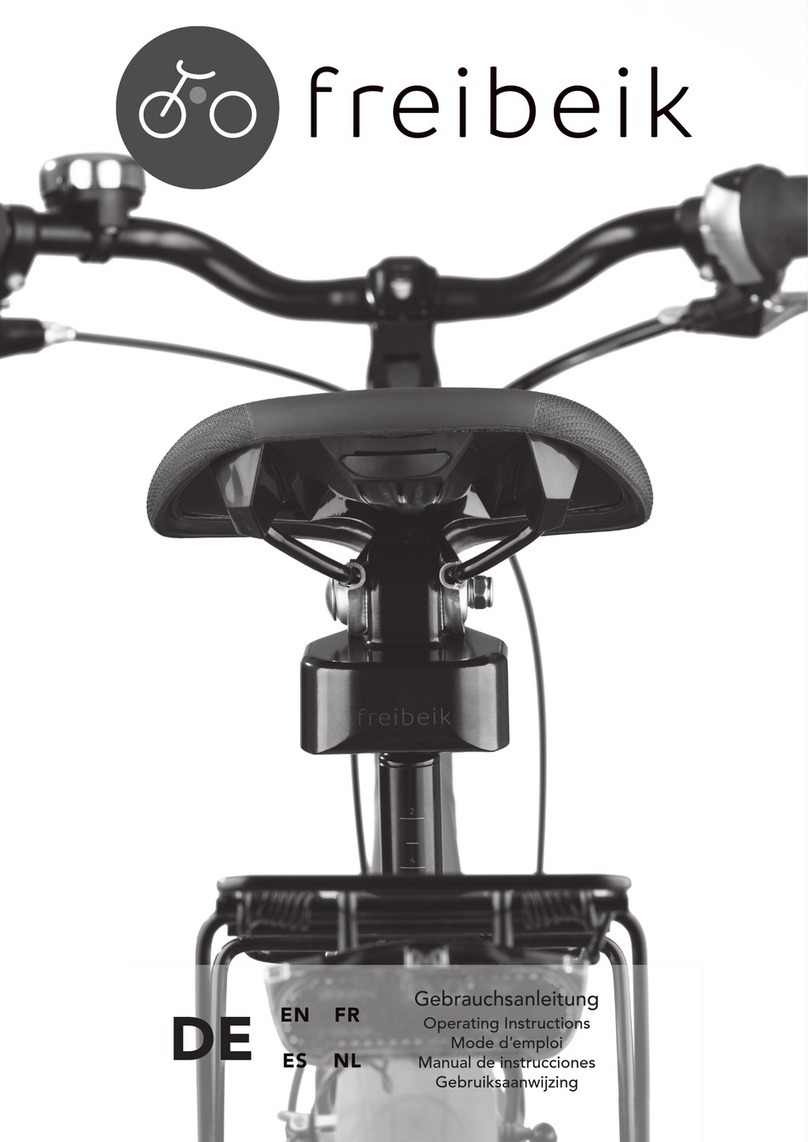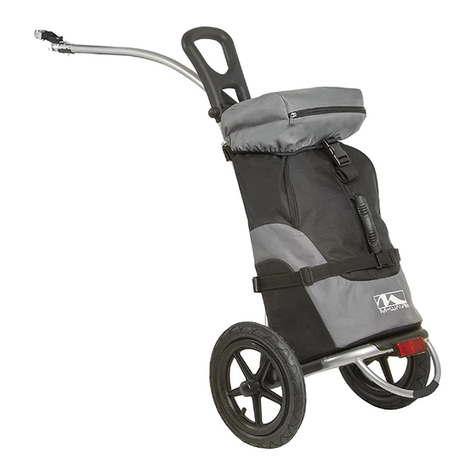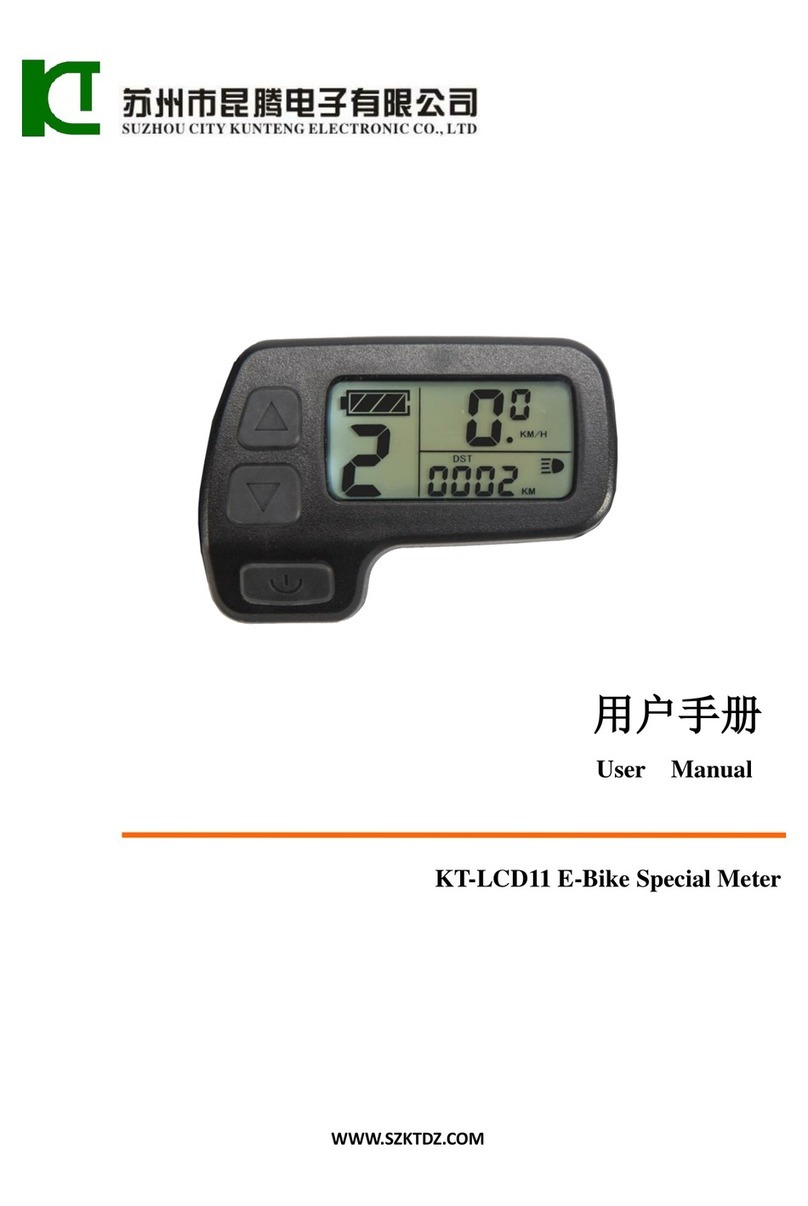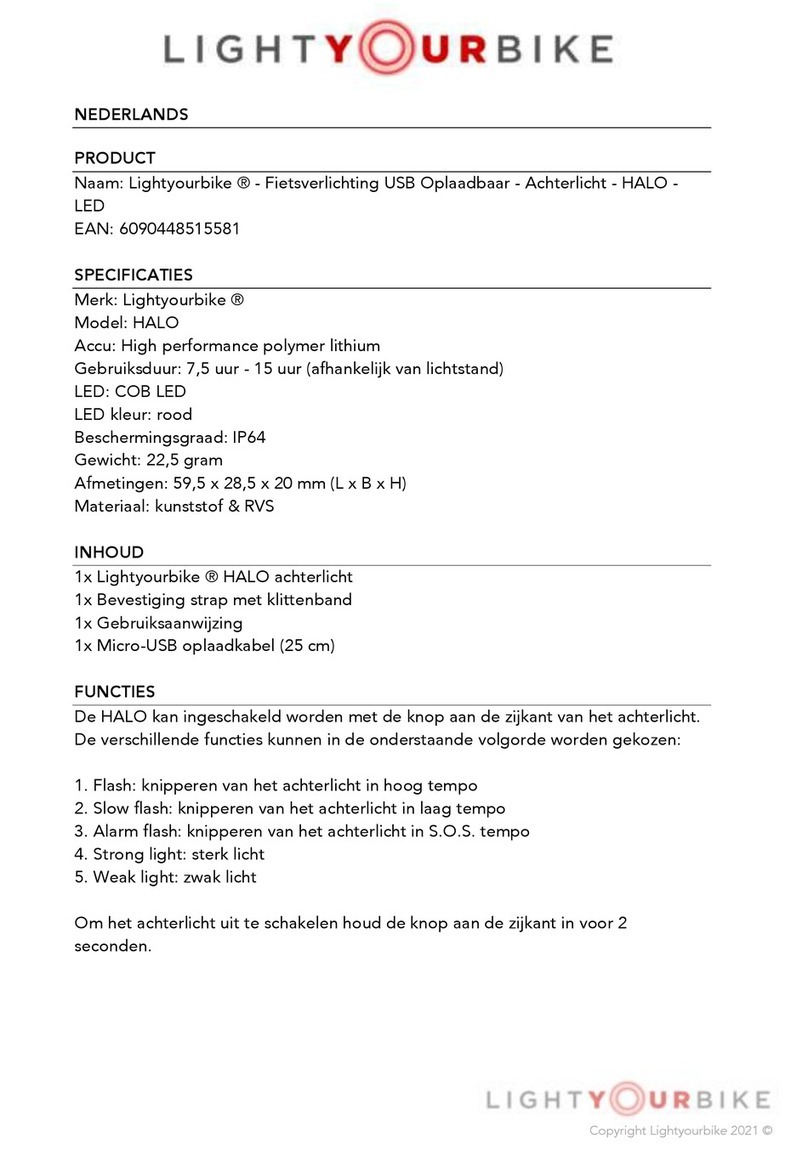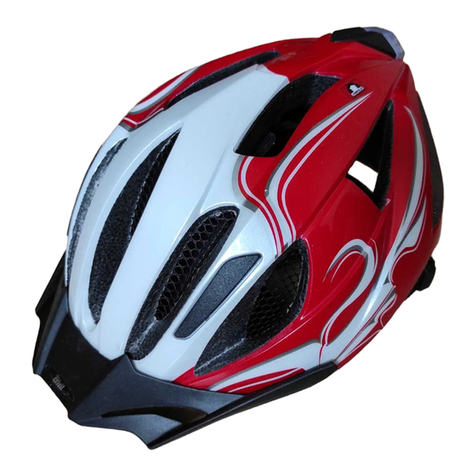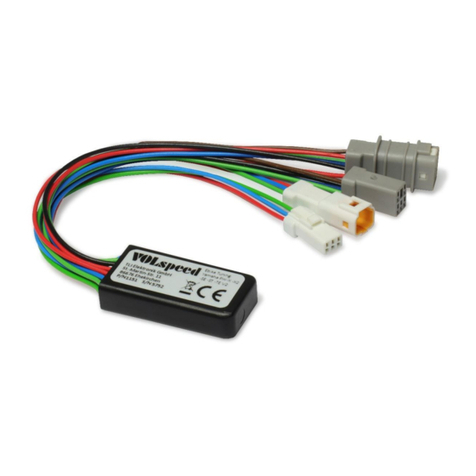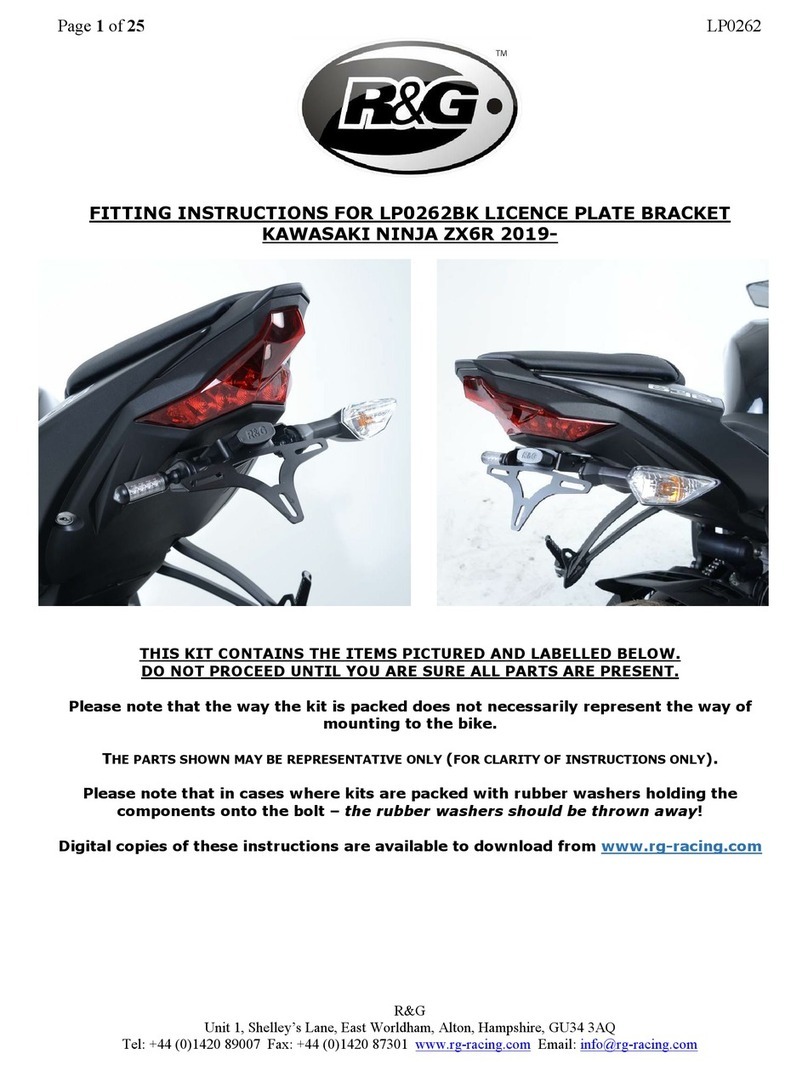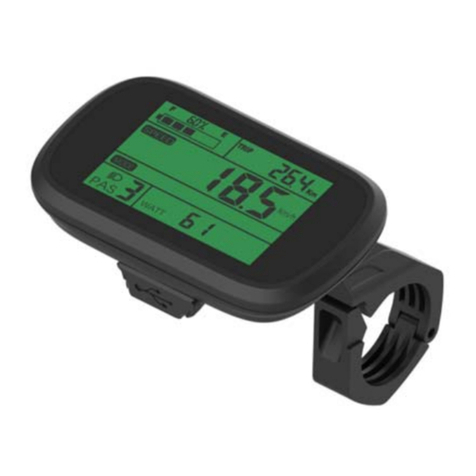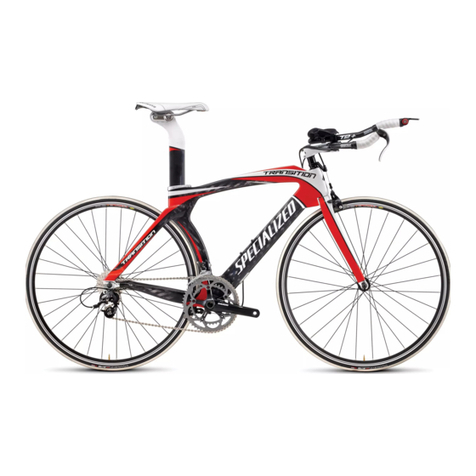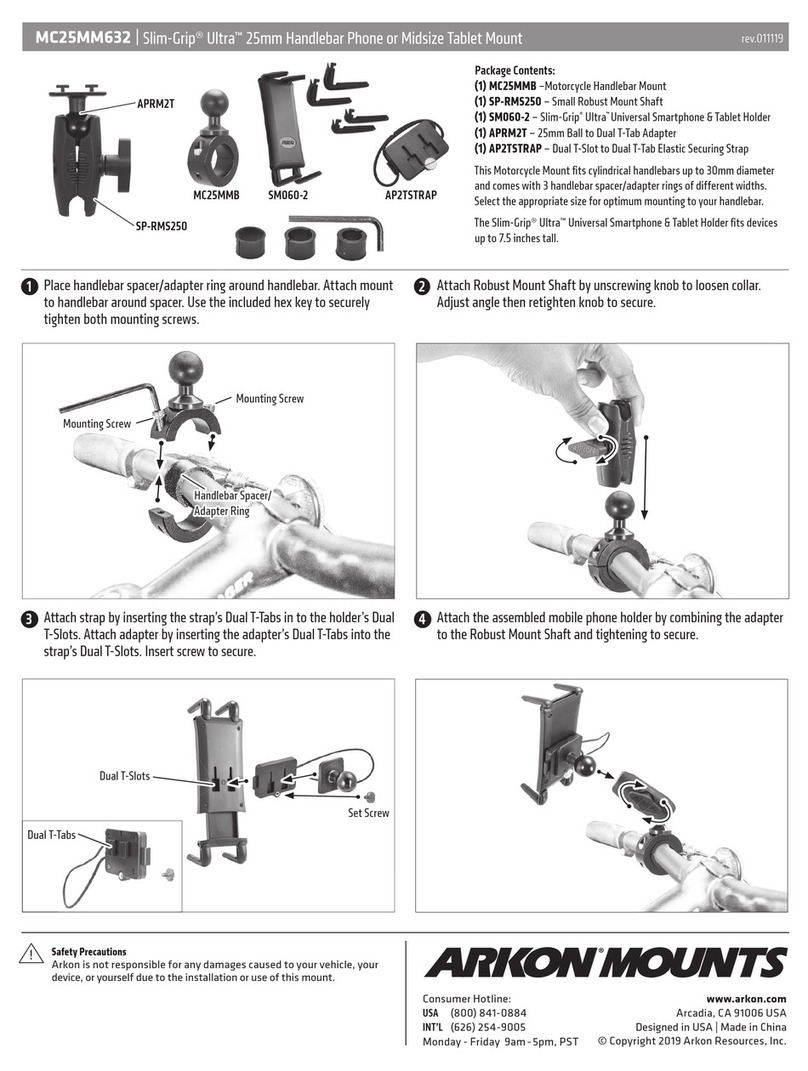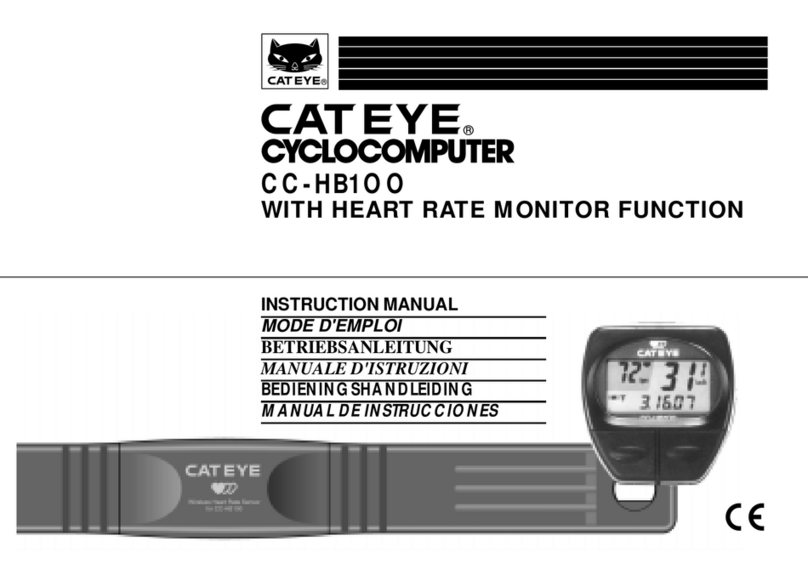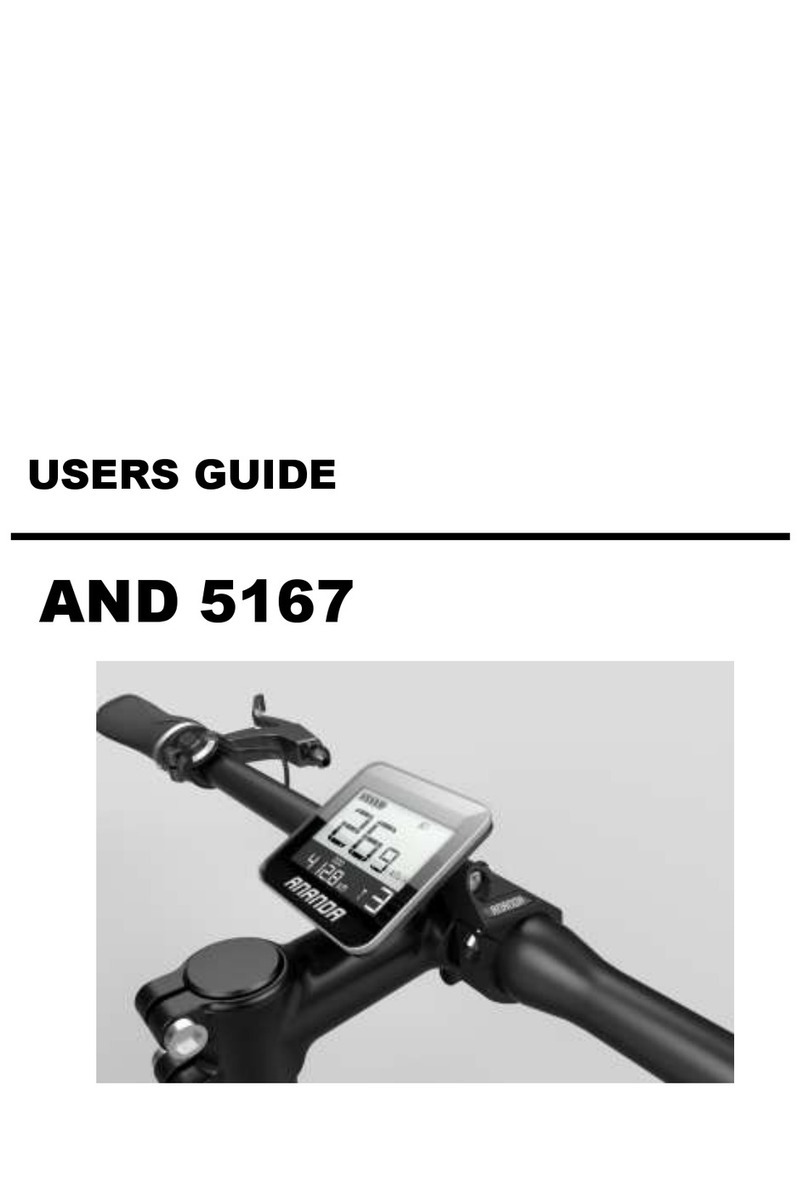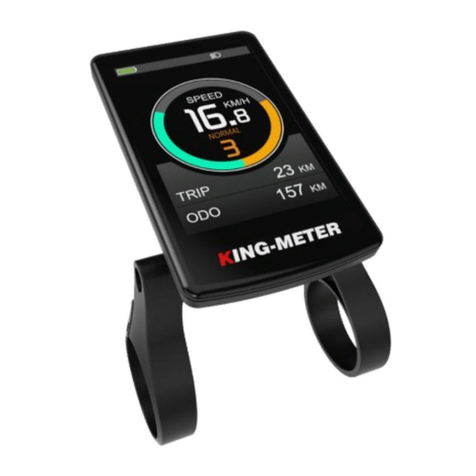BOS Suspension VOID2 User manual

VOID²
User Manual
l

Terms and conditions
BOS Suspension offers warranty on its products on the following terms:
BOS guarantees to the original purchaser that the BOS product for which they
received this warranty is free from defects in material and workmanship for one
year from the date of original retail purchase. A proof of purchase will be asked for
any warranty claim. This warranty is not transferable to a subsequent purchaser.
Wear and tear parts such as dust seals, O-rings, bushings, rear shock mounting
hardware, stanchions, threaded parts and bolts are not covered under this
warranty.
Terms
This warranty is subject to legal jurisdictional or warranty rights of the country
where it has been originally purchased, which will prevail if different from the
terms herein listed.
Limits
BOS Suspension cannot be liable for any loss, inconvenience damages, whether
direct, incidental, consequential, resulting from the use of its products, local
legislation prevailing.
Warranty exclusions
This warranty does not cover the following cases:
• Damage to products resulting from improper assembly other than listed below
• Products that have been modified by the owner or a third party
• Improper use
• Damages resulting from an accident or a crash under any circumstances
• Invalid servicing procedures and servicing time frame not respected
• Replacement of the original parts by parts from others manufacturers
• Products whose serial numbers has been altered, defaced or removed.
Warranty procedure
The owner should always refer to an approved BOS service center for any
warranty claim. A proof a purchase is compulsory for any warranty claim.
Otherwise the warranty claim will not be considered. Always contact BOS
Suspension warranty department before returning any products that may fall
under this warranty. If “the faulty parts” do not fall under warranty, the customer
will be charged for any costs in respect with warranty such as transport and
package back and forth.
Warranty

The VOID shock that you’ve bought was designed and developed to fit most bikes on the market;
nevertheless you should refer to the tuning section of this manual to fit it perfectly to your bike, your
weight, and your riding style.
Your VOID shock is delivered with the correct mounting kits for the bike specified while ordering.
If you want to change or replace it please refer to the following plan:
Check the mounting direction
By referring to the compatibility table, available on the BOS MTB website download page.
Refer to the bike’s user manual
To follow your bike specific shock mounting procedure.
1. Introduction
Standard mounting kit:
MKP2-XX-YY
Example: MKP2-30-08
It’s necessary to measure precise
dimensions for each side of the
shock.
2. Assembly
Caution :
Never try to disassemble your shock. Limit yourself to the instructions given in this manual. This
shock is pressurized, for your own safety, do not try to open it. You also risk damaging the shock and
its internal mechanisms as well as voiding your warranty.
Contact an authorized service center for any maintenance operation.
XX
XX
YY
YY

3.1 AIR PRESSURE
In order to get the best performance from your BOS product, it’s essential to set up the shock to an
optimum air pressure based on your weight and your bike’s rear suspension geometry before using the
shock. Refer to the compatibility table in the download area of BOS website for the base recommended air
pressure.
Connect a shock pump to the Schrader valve located on the side of the upper part of the body, and inflate
to the recommended pressure.
3.2 EQUALIZING AIR CHAMBERS
In order for your shock to function correctly, you must equalize the air chambers after setting your
pressure.
To equalize the chambers, the shock must be
fitted on the bike.
Place the travel checker O-ring at 11 mm from
the shock seal, sit on your bike, and slowly
compress the suspension until the seal comes
to the O-ring. Let the suspension slowly extend
to its full travel. Slowly cycle the shock 15 times
over the first 11mm of its travel to complete
the equalization process.
valve
d'air
3. Settings
11mm
It’s recommended to us our BOS
shock pump with a digital gauge for
more accuracy, available on our
website:
http://boutique.bosmtb.com/

3.3 SETTING YOUR SAG
The sag is the amount of travel used by your suspension from your weight on the bike. It is set by adjusting
the air pressure.
BOS recommends a sag percentage of 30 to 35 %, depending on your use and your riding style.
The bike manufacturer may also indicate a sag percentage. Please refer to your bike’s user manual for this
value. If the manufacturer recommendation differs from ours, you should test the bike on the trail at
different sag values to find the right amount for your riding style.
How to measure and set your sag
Slide the travel checker O-ring up to your shock’s dust seal.
Sit on your bike (if possible dressed with your riding outfit) feet on the pedals - horizontal position, and let
the suspension compress under your weight. Get off the bike without pushing on the suspension any more,
extend the rear suspension to its full travel by pulling up the saddle, and measure the distance between
the O-ring and the seal. This distance allows you to check the percentage of SAG obtained with the current
air pressure.
To convert the distance into percentage, refer to the table below.
length x stroke (mm)
222x67
240x76
267x87
SAG (%)
35
30
30
35
30
35
Shock travel (mm)
24
23
20
24
23
24
If the sag is not correct, adjust the air pressure in 15psi steps. Equalize the air chambers after each
adjustment.
Too much SAG: increase the air pressure.
Not enough SAG: reduce the air pressure.
SAG

3.4 HYDRAULIC SETTINGS
The VOID shock is a three-ways adjustable shock, which means there are
three different damping adjustments: rebound, low-speed compression,
high-speed compression.
Your shock’s base setting (internal) is set up for your bike’s geometry
when you purchase the shock. We use three basic settings which cover
the majority of bikes on the market.
The purpose of damping adjustments is to use all the shock’s travel
without bottoming-out (or only very occasionally), to give rear wheel grip,
but also to avoid the bike stalling out in holes, and finally to maintain a
good chassis position.
Below you will find the base settings for your shock, then it’s up to you to
analyze its performance on the trail and tune the settings to suit your
riding style. Do this carefully and methodically, step by step. Only change
one setting at a time and only by a few clicks. When it’s done, note the
setting and type of terrain.
If you get confused with the settings, return to the base settings and start
again.
Low-speed compression (A)
The low-speed compression (A) affects the shock’s performance in compression over small bumps or
through the beginning of the travel.
Harden the low-speed compression (by turning the knob clockwise) on rolling terrain with big
compressions and kickers.
It might be useful to soften the low-speed compression (by turning the knob counter-clockwise) on steep
gradients.
High-speed compression (B)
The high-speed compression acts mainly on harsh hits (jump landings, rough sections). It should be soft
enough to get all the travel without bottoming-out. If, on a given track, you bottom-out frequently, harden
the high-speed compression by turning the knob clockwise. However, don’t get hung up on bottoming-out
if it only happens once or twice during your run. You risk setting your shock for 3% of the course and losing
efficiency on the other 97%.
If your shock doesn’t get full travel, soften the high-speed compression by turning the knob to counter-
clockwise.
Rebound (C)
The main factor in adjusting the rebound is the position of the bike. A bike shouldn’t be “sunken down” all
the time, although the back does need to be fairly low. Adjusting the rebound will allow you to maintain
this balance.
If you feel like the back of the bike is pushing you forward on a slope or when braking, slow down the
rebound (turn the knob clockwise). It can be useful to go along with this adjustment (especially if the
problem persists) by slightly soften the low-speed compression.
However, if the bike seems too low at the back and/or the front end has a tendency to drift offline, speed
up the rebound
A
B
C

Base settings (regardless of internal shock setting):
Please refer to the shock chart list available to download at bosmtb.com for specific pressure and setting
suggestions for your bike and weight.
3.5 AJUSTING AIR VOLUME
The progressivity adjustment featured on the VOID, allows you to adjust the air spring rate on the last third
of stroke. Thus, if you have found satisfying settings (air pressure and hydraulic) on the first half of the
stroke, you can adjust the feel of the last millimeters of travel.
The most frequent and simplest cases are:
The shock has an overall setup to single out comfort and grip, and the bike sits low: by increasing the end-
stroke rate you will get a better control of the chassis through the shock and avoid bottoming out. The rate
curve should be more progressive (increasing at the end) by adding o-rings.
The overall setup of the shock is more responsive, with a high chassis balance. By decreasing the end
stroke rate by removing o-rings, you can make sure that you use all the travel.
This setting is adjusted by adding or removing O-rings placed inside the air can.
We suggest you to go about the set-up step by step. First add or remove two O-rings, then fine-tune the
setting with one O-ring at a time. Adding one O-ring in the chamber increases the end of stroke spring rate
by 2%.
Usually, the correct setting is between 0 and 4 O-rings. However, the range can go up to 10 O-rings
depending on the bike
Important :
To start your adjustment, turn the knob clockwise until it stops (clicks = 0). Then count the clicks
while turning the knob counterclockwise.
Low-speed compression: 12 clicks from fully closed position
High-speed compression: 17 clicks from fully closed position
Rebound: 12 clicks from the fully closed position
Important :
With a significant hydraulic compression support, the VOID shock allows the bike to maintain a high
dynamic balance, as well as giving good response, and improved handling. BOS recommends setting up
the bike with a fast rebound to keep the chassis balanced, and avoid the bike sitting low in its travel.
The feeling of «fast» or «slow» rebound will differ from one rider to another. Thus it’s difficult to
define it precisely. We advise you to define your own range of correct rebound - the range of settings
between «too fast» and «too slow». Then, always choose a setting in the faster part of that range, for
example the three last clicks (counterclockwise) on a range of nine.

Caution :
Before tightening the vice, make sure the
jaws grip a flat surface and are not
touching the rebound knob.
Caution :
The shock body must not be unscrewed.
The air can is unscrewed by hand without
additional tools.
Procedure
Place the head of the shock in a soft-jawed
vice (figure 1).
Lightly tighten the vice jaws to prevent
damaging the shock.
Note your shock pressure, taking into
account the loss of pressure when
connecting your pump. Slowly deflate the
shock. The shock body will retract slightly.
Unscrew the air can (a) while keeping the
body (b) in its initial position (figure 2).
Remove the air can (figure 3)
Insert or remove O-ring(s) from the body
side of the shock and put them in position
(figure 4).
Make sure that O-ring(s) do not block the hole in the shock.
Make sure you have aligned the air can (a) sticker with the rebound knob (figure 5).
Replace the air can by screwing back by hand until the stickers align to ensure the proper torque (figure 6).
If the stickers do not align when the air can is hand tight, re-inflate and equalize the shock air chambers
(chapter 3.2) then finish tightening the air can.
Mount the shock on your bike re-inflate it shock and equalize the shock air chambers (chapter 3.2).
4
1
2
3
!
4
5
B
!
A
6
Caution :
Only use O-rings provided by BOS. The dimensions and the material are specifically chosen for this
purpose.

Caution :
The shock body must not be unscrewed.
The air can is unscrewed by hand
without additional tools.
Caution :
Before tightening the vice, make sure the
jaws grip a flat surface and are not touching
the rebound knob.
3.6 AIR VALVE ADJUSTMENT
It is possible to place your VOID air valve around the air can, and also position it toward or away from the
piggyback. This allows the shock to be fitted on a maximum of frames.
To modify the direction of your valve, or rotate it around the air can follow the instructions below:
Place the head of the shock in a soft-jawed
vice (figure 1).
Lightly tighten the vice jaws to prevent
damaging the shock.
Note your shock pressure, taking into
account the loss of pressure when
connecting your pump. Slowly deflate the
shock. The shock body will retract slightly.
Unscrew the air can while keeping the body
in its initial position (figure 2).
1
2
3
4
4
Caution :
Never place the valve in front of the piggyback, in the no-valve area, even if it is facing away from the
piggyback. The piggyback may hit the valve and seriously damage your shock.

Remove the air can (figure 3)
Change the position of the valve sleeve if
needed and rotate it according on your
needs (figure 4).
Make sure you have aligned the air can (a)
sticker with the rebound knob (figure 5).
Replace the air can by screwing back by hand until the stickers align to ensure the proper torque (figure 6).
If the stickers do not align when the air can is hand tight, re-inflate and equalize the shock air chambers
(chapter 3.2) then finish tightening the air can.
Mount the shock on your bike; re-inflate it and equalize the shock air chambers (chapter 3.2).
Service
It is essential to clean your shock after each day of riding without waiting! Nothing is worse for the life of
your seals than dirt and dust.
The cleaning process is also extremely simple: wipe off the body and the seal with a clean, soft rag. You can
occasionally lubricate the exterior of the seal with fork oil.
Do not under any circumstances use degreaser, solvent, or any abrasive material.
On the same note, do not ever power wash the seals.
Cleaning
Oil service
Full service
Recreational use
After each ride
Once a year
Every two years
Racing use
After each ride
Once a year
Once a year
3. Maintenance11
Caution :
Oil changes and service should be performed at an official BOS service center. These are the only
locations able to identify and resolve damaged or worn parts on your product, especially in the case
of extreme shocks or premature wear on structural elements such as body, mounting kits, and shaft.
B
!
A
6
5

What is the basic set up?
Your VOID shock was delivered with intermediate external hydraulic settings and inflated to a 80 to 100psi
pressure; nevertheless you should refer to the tuning section of this manual to fit it perfectly to your bike,
your weight, and your riding style.
You can find all the information about standard settings for your bike in the chartlist on the BOS website
download section.
There is air leaking when I connect the high pressure pump, what can I do?
Check that your pump is correctly connected to the valve shell. Make sure that the Shrader valve core is
correctly tightened.
My shock is too stiff on the first inches of travel and / or the rebound is very fast. What can I do?
The two air chambers are not correctly equalized. Check out chapter 3.2 to see how to equalize your air
chambers.
Once reassembled, the shock stickers are not aligned. What can I do?
To be sure that the stickers will be correctly aligned, check out chapter 3.5.
My shock has a slight negative travel. Is that normal?
The BOS air spring is designed to lower the engagement threshold as much as possible. Therefore, it is
possible on some bikes that there will be a small negative travel.
Where can I purchase replacement stickers and valve cap?
You can purchase these items through your approved BOS center, or on the BOS store on bosmtb.com.
I noticed some play between my shock and the frame, what can I do?
Check that your mounting hardware is torqued to your manufacturer’s specifications. If it is, the rear shock
mounting hardware must be replaced. Contact an approved BOS service center, or connect on BOS
website.
My shock is compressing when I deflate it, is that normal?
When you deflate your shock from the air valve, you are only deflating the positive air chamber. The
negative air chamber is still pressurized and pulls on the shock’s shaft. If you want to avoid this, deflate
step by step (30 to 40psi), and balance the air chambers between each step (5 to 6 slow compressions and
extensions over the first 11mm of the shock’s travel).
My shock makes a whistling or clicking sound when I compress it.
These sounds are normal to the functioning of the hydraulics when the rebound or low-speed compression
circuit is closed or almost closed. Check your settings and bring them closer to the base settings in your
product’s user manual to reduce this noise.
4. FAQ11

I’ve not had success in setting up my shock. What can I do?
The internal tuning (settings/air damper) it’s a preset tuning to correspond to a maximum of peoples,
however it’s possible to adapt all of this parameters to match with your weight, your use and your style,
even so to optimize your set up please contact your BOS service center.
For any other questions, please visit our FAQ page on the BOS website or send us a message to
Date
Location
Air pressure
(Psi)
HS
Compression
LS
Compression
Rebound
Remarks
5 .Notes
4, impasse Léonce Couture - F31200 Toulouse
tel : + 33(0)534 25 33 66 - fax : + 33(0)534 25 33 60
Table of contents
Other BOS Suspension Bicycle Accessories manuals
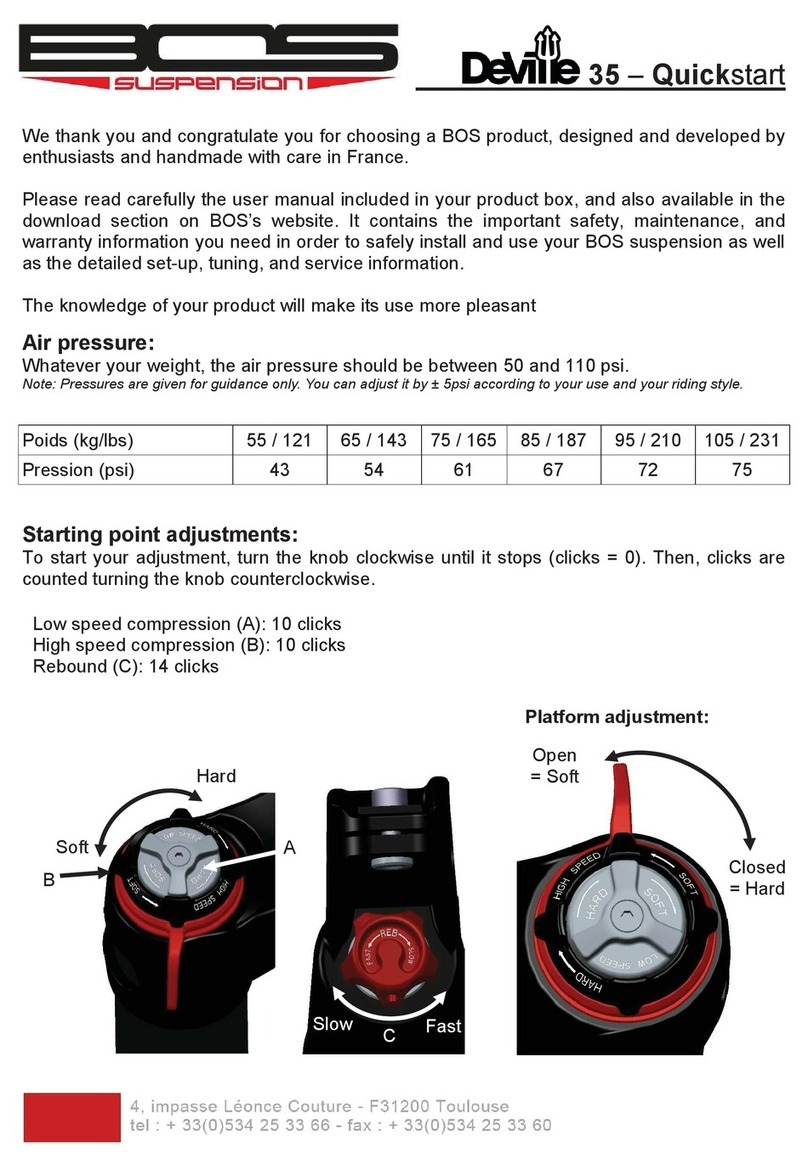
BOS Suspension
BOS Suspension Deville 35 User manual

BOS Suspension
BOS Suspension iDYLLE 39 FCV User manual

BOS Suspension
BOS Suspension KIRK User manual
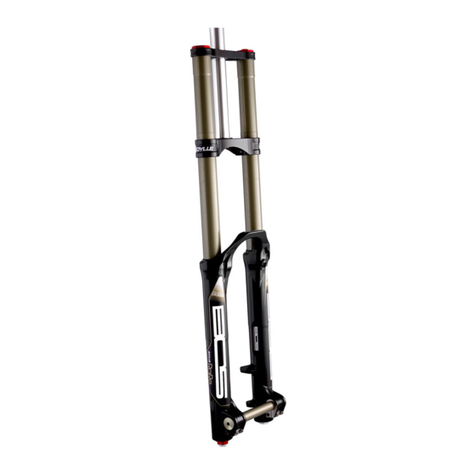
BOS Suspension
BOS Suspension IDYLLE User manual

BOS Suspension
BOS Suspension IDYLLE 2014 User manual

BOS Suspension
BOS Suspension RARE FCV Series User manual
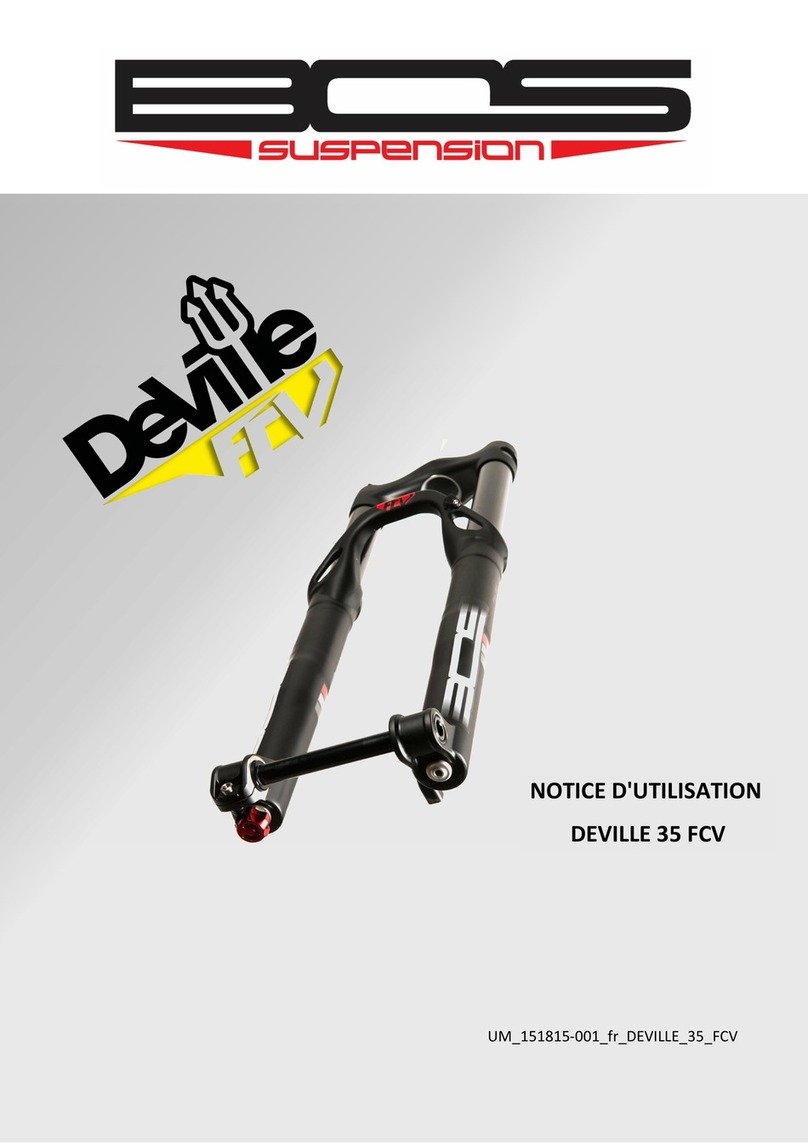
BOS Suspension
BOS Suspension DEVILLE 35 FCV User manual

BOS Suspension
BOS Suspension Deville 35 User manual

BOS Suspension
BOS Suspension iDYLLE 39 SC User manual

BOS Suspension
BOS Suspension iDYLLE 39 SE User manual
